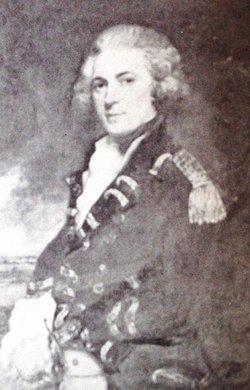
(b. 1 June 1754; d. 1834)
1775, an illegal rebellion against the Crown had been initiated by American traitors in the 13 colonies. At this time Virginia was at the epicenter of power on the continent. It was in this colony that John Saunders ruled his estate. At the time of the insurrection, John Saunders was attending University where he studied law. A loyal son of the British tradition, John Saunders remained a staunch Loyalist, despite repeated overtures from American rebels. His opposition to the American rebels predates the conflict, when his fellow colonists proposed the political distancing of Virginia from the Motherland he let his opposition be known.
As war overtook the colonies, Saunders raised a troop of personal cavalry to fight for the Crown. Bloodied in their first battle of the war at Great Bridge, his regiment was merged with the Queen's Rangers (Hussars). This merger was fortuitous, it created what became the most respected and effective cavalry troop on both sides of the rebellion. In part, this was due to the eclectic nature of the regiment's composition. Its men employed a combination of infantry, cavalry, and artillery tactics allowing it to act as a self-contained army. This combination served the regiment throughout the rebellion, their only defeat coming at the end of the rebellion when the British surrendered.
During the rebellion, John Saunders served as a Captain with the Queen's Rangers. Commanding the infantry, John Saunders was twice wounded in battle. Following this, in 1778, John Saunders returned to his roots as commander of three company of Hussars that had joined the regiment. Following this post, in 1780 he was requested to serve with General Leslie. However, this posting did not last long. John Saunders was present of the Battle of Yorktown in 1781, where the British were defeated. Saunders escaped with his troop of cavalry and headed to New York. With his estates confiscated, Saunders and the regiment set sail for re-settlement in Nova Scotia, arriving in the post of Saint John in 1783, which became New Brunswick in 1784.
In 1782, John Saunders went to England where he finished his legal training and was called to the Bar. Financially secure following the recompense paid by the Crown for his service and losses in Virginia, Saunders headed back to New Brunswick in 1788. Once there, he began purchasing land to build his estate. However, before this occurred, Saunders was appointed to the New Brunswick Supreme Court in 1790. Moreover, Saunders became the only Judge to be appointed to the Court and elected to the House of Assembly. Saunders became the largest landowner in New Brunswick, yet it was not until some time after his death that his grandson, John Saunders, built the estate at Fox Hill, Apohaqui. As an accomplished soldier, Saunders returned to military service in 1808 due to fears of American aggression. Finally, Saunders is credited as the grandfather of the 8th Canadian Hussars.